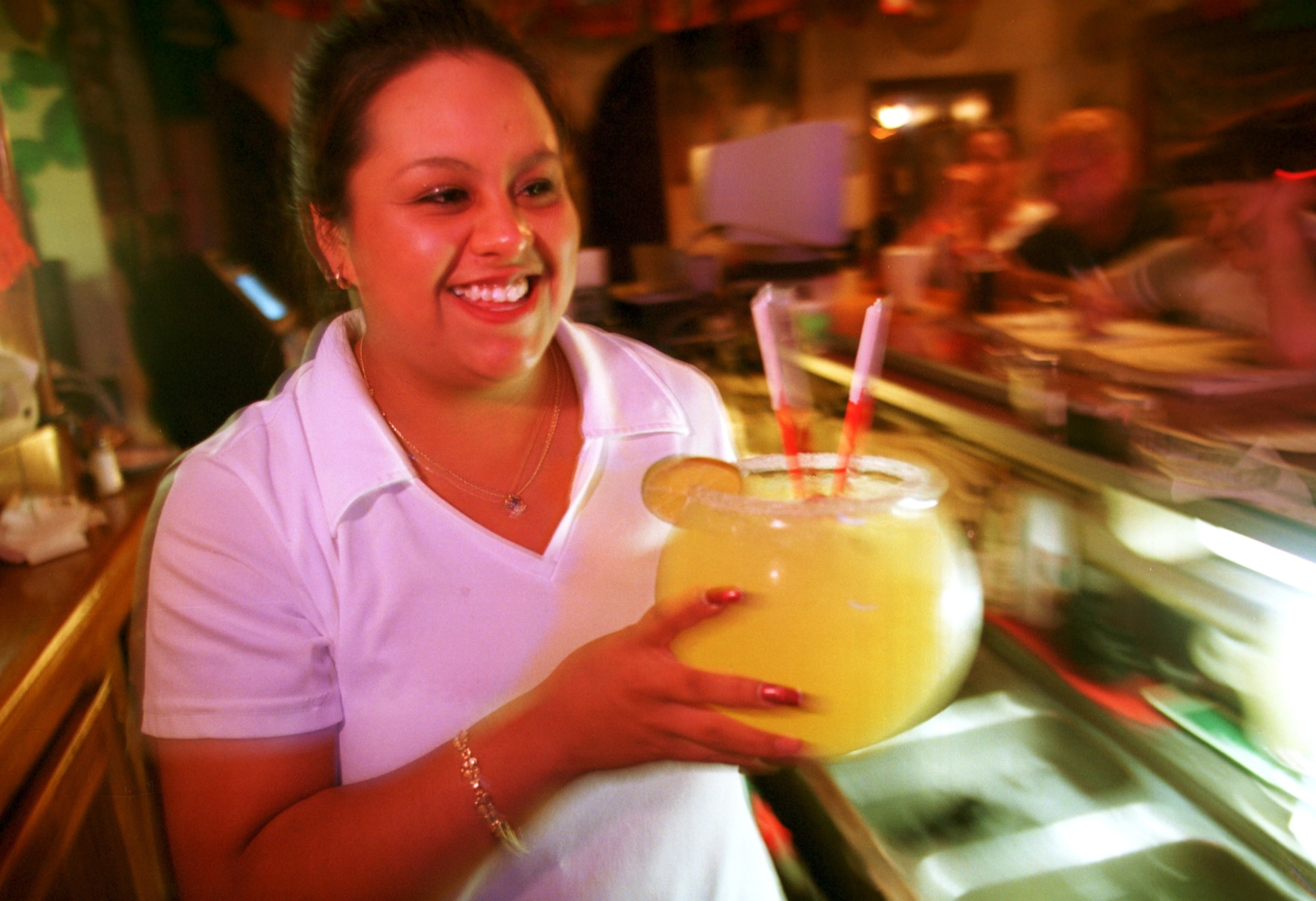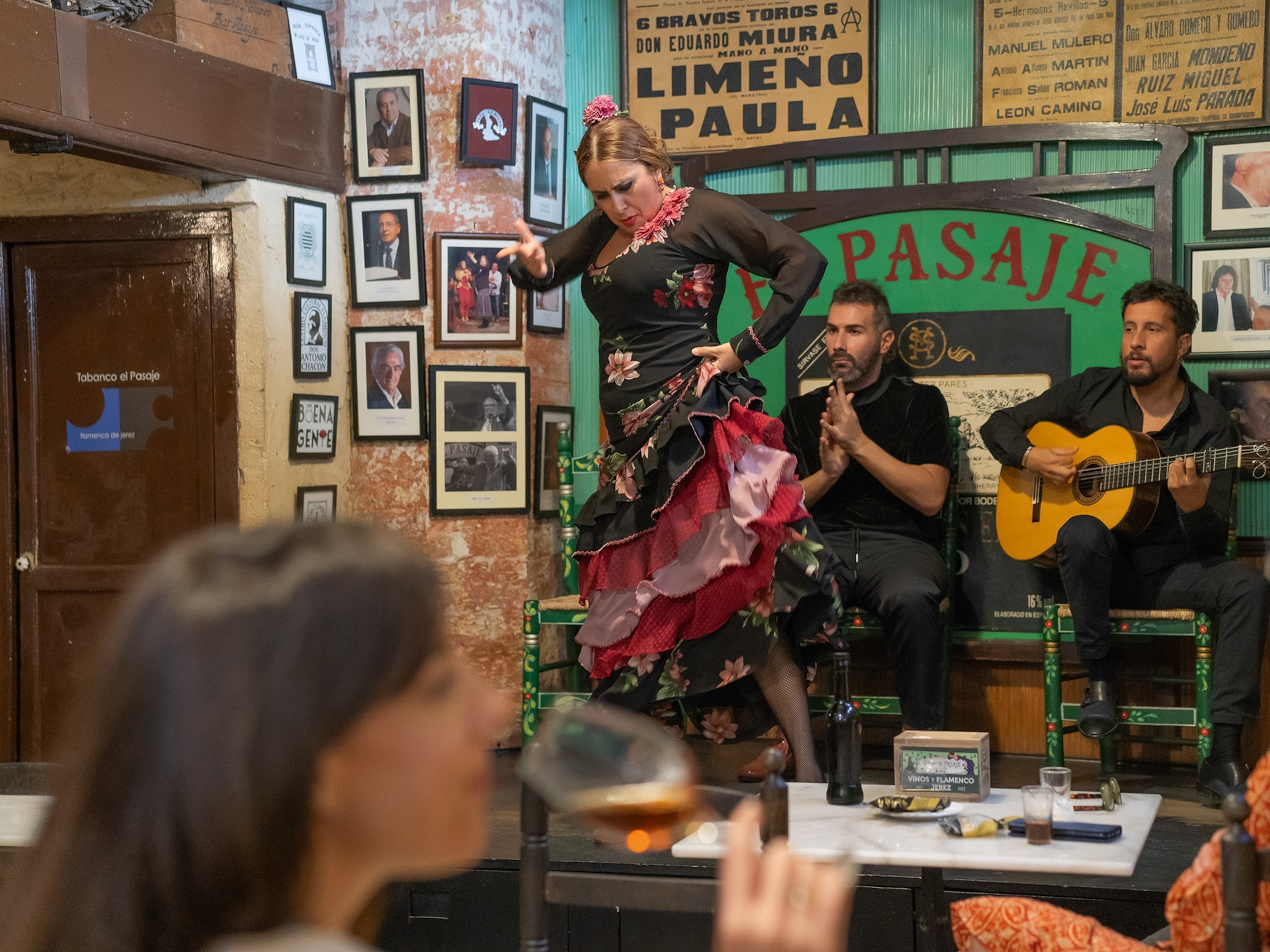
The Thirst-Quenching History of the Margarita
We just missed National Margarita Day, which was Monday, but that doesn’t mean we can’t raise a glass while we dive into the drink’s romantic story.
The official National Margarita Day website is cagey about just where the holiday came from. Most likely it originated as a creative marketing ploy on the part of the tequila industry. Its origins are murky, but then so are those of the margarita itself.
Nobody knows who invented the margarita. It’s a mystery cocktail. But it’s very likely that it involves a beautiful woman.
One story goes that the drink was first concocted by Mexican restaurant owner Carlos (Danny) Herrera in 1938 for gorgeous Ziegfeld showgirl Marjorie King. King was allergic to all forms of alcohol except tequila, but didn’t like to drink the stuff straight. Herrera supposedly solve the problem by adding salt and lime and creating the world’s first margarita.

Another claims that it was the brainchild of Texas socialite Margaret (a.k.a. Margarita) Sames, who first mixed one up at a house party in Acapulco in 1948. Or it may have been named for actress Rita Hayworth, who was offered one by an admiring bartender during a theater gig in Tijuana in the 1940s. (Hayworth’s real name was Margarita Cansino.) Or it was first served up in Galveston, Texas, to singer Peggy Lee. (Her real name was Norma Egstrom. Peggy, however, is a traditional nickname for Margaret, hence margarita.)
According to cocktail historian David Wondrich, author of Imbibe!, best guess is that the margarita as we know and love it evolved from a cocktail known as the “daisy.” This, a mix of alcohol, citrus juice, and grenadine served over shaved ice, was popular during the 1930s and 40s. There were gin daisies and whiskey daisies and, eventually, inevitably, tequila daisies, the original recipe for which called for tequila, orange liqueur, lime juice, and a splash of soda.
At some point, this Mexican-influenced daisy became known by its Spanish name, margarita, which means daisy in Spanish. According to the Oxford English Dictionary, margarita—meaning “a cocktail made with tequila and citrus fruit juice”—first appeared in print in English in 1965, though other sources point out that margaritas were popping up in Jose Cuervo ads as early as 1945.
Nowadays, there are hundreds of permutations of margaritas. As of 2008, the margarita was the most commonly ordered drink in the U.S., accounting for 18 percent of all mixed drink sales. (Runner-up was the martini.) Margaritas are now churned out in every conceivable flavor from pomegranate to strawberry, raspberry, ginger-pineapple, cucumber mint, green tea, and chocolate, variously served in glasses rimmed with salt or sugar, straight up, over ice, or frozen.
The frozen margarita—basically a tequila-laced slushie—owes its existence to Fred Waring and the electric blender. The Waring blender was a popular kitchen appliance by the 1950s, and by 1952, new blender owners were using theirs to make strawberry daiquiris, in which rum, sugar, lime, and frozen strawberries were all pulverized into a cold, slurpy, and scrumptious alcoholic mush. The recipe first appears in Mabel Stegner’s 1952 Electric Blender Recipes and, at least according to Serious Eats, just may be the ancestor of today’s enormous repertoire of frozen blended cocktails.
Unlike the daiquiri, however, the frozen margarita is distinguished by having its very own frozen-margarita-making machine, the prototype of which can be seen today in the Smithsonian’s National Museum of American History. The story, described here by researcher Rayna Green, centers around Mariano Martinez, a young Texas restauranteur, who in 1971 began serving frozen margaritas to customers in his restaurant, Mariano’s Mexican Cuisine. The new drinks were so popular that bartenders, armed only with blenders, were hard-pressed to keep up with the demand, so Martinez and a friend—talented tinkerers—converted a soft-serve ice-cream machine into a large-scale margarita maker. The novel machine made Mariano’s restaurant wildly successful, and it was soon adopted by other restaurants hoping to do likewise.
Bottom line: If you’re planning to waste away in Margaritaville anytime soon, you’ve got a lot of great cocktail possibilities.
But if it doesn’t work out—well, it’s your own damn fault.




